What is a cashew tree? Description of the cashew tree's botanical characteristics: stem, roots, leaves, flowers, fruits, seeds
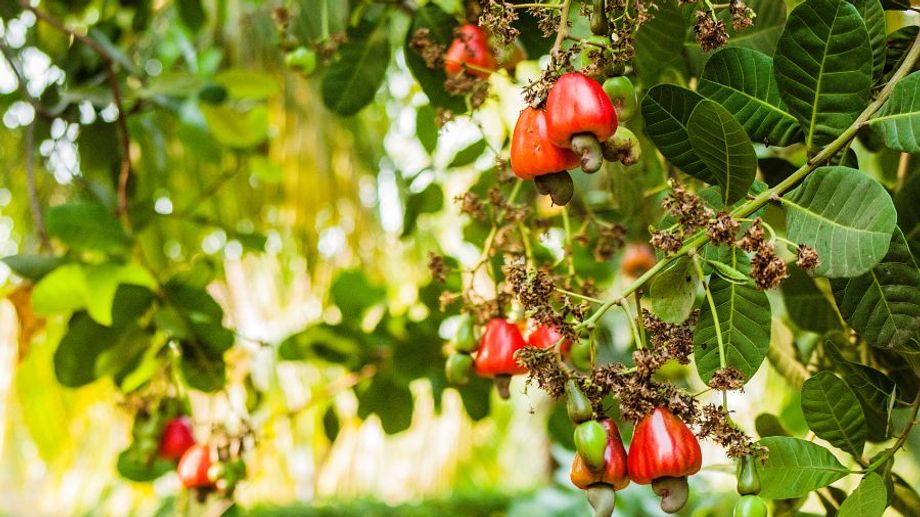
Mục lục
What is cashew?
Cashew (also known as cashew) is a perennial industrial plant belonging to the Anacardiaceae family. Its scientific name is Anacardium occidentale. This tree is native to Brazil and grows best in tropical climates, including Vietnam.
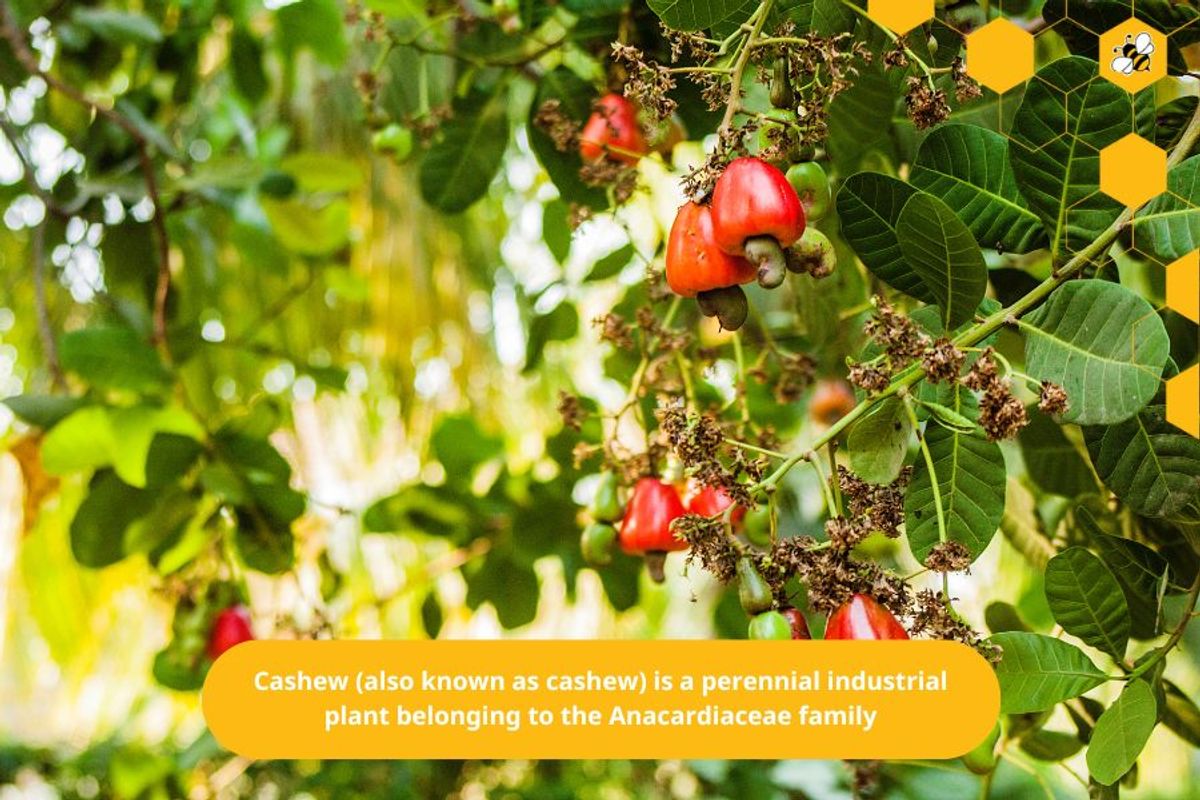
Here is some information about cashew trees:
Planting and harvesting time: Cashew trees take 2 to 3 years to mature and harvest cashew nuts. The lifespan of a cashew tree can be up to 40-50 years, and productivity is usually stable for 10 to 20 years after planting.
Characteristics of cashew trees:
Cashew trees are usually about 3m to 9m tall.
Cashew leaves grow alternately, are silvery, turn white, and have a light aroma.
Cashew fruits have hard shells, do not open by themselves, have sunken eyes, and the fruit stalk swells into a pear shape.
Economic and nutritional value:
Cashew trees have high economic value, with delicious fruit and nutritious cashew nuts.
Cashew nuts contain many nutrients, bringing benefits to human health.
Planting and harvesting time: Cashew trees take 2 to 3 years to mature and harvest cashew nuts. The lifespan of a cashew tree can be up to 40-50 years, and productivity is usually stable for 10 to 20 years after planting.
Characteristics of cashew trees:
Cashew trees are usually about 3m to 9m tall.
Cashew leaves grow alternately, are silvery, turn white, and have a light aroma.
Cashew fruits have hard shells, do not open by themselves, have sunken eyes, and the fruit stalk swells into a pear shape.
Economic and nutritional value:
Cashew trees have high economic value, with delicious fruit and nutritious cashew nuts.
Cashew nuts contain many nutrients, bringing benefits to human health.

Description of cashew tree characteristics: stem, root, leaves, flowers, fruit, seed
The cashew tree (Anacardium occidentale) is a small tree with a trunk that is usually ten to twelve meters tall, with a short, often irregularly shaped trunk. The leaves of the cashew tree are spirally arranged, leathery in texture, oval to obovate, four to twenty-two centimeters long and two to fifteen centimeters wide, with a smooth margin.
The fruit of the cashew tree is not a true seed but is shaped like a thick bean and can be more than 2.5 centimeters (1 inch) long. It looks as if one of its ends has been pierced by a swollen pear-shaped stalk, called a cashew apple. The cashew apple, an accessory fruit (not a true fruit), is three times the size of the true fruit and is red or yellow. The true fruit has two layers of skin. The outer layer is smooth, thin, and elastic, initially olive green and turning light brown when ripe.
The fruit of the cashew tree is not a true seed but is shaped like a thick bean and can be more than 2.5 centimeters (1 inch) long. It looks as if one of its ends has been pierced by a swollen pear-shaped stalk, called a cashew apple. The cashew apple, an accessory fruit (not a true fruit), is three times the size of the true fruit and is red or yellow. The true fruit has two layers of skin. The outer layer is smooth, thin, and elastic, initially olive green and turning light brown when ripe.

The cashew tree is an evergreen tree that can grow up to 12 meters (40 feet) tall in areas with fertile soil and high humidity. The leaves are leathery, oval, and spirally arranged. The cashew apple and the cashew nut are a valuable source of cashew nuts, which are widely used in South Asian and Southeast Asian cuisine, as well as high-quality protein food in Western countries. However, care should be taken when handling certain parts of the cashew tree, as it is associated with a very poisonous plant and can cause allergic reactions in some people.
The cashew tree (Anacardium occidentale) is an evergreen tropical tree, and it has the following botanical characteristics:
The cashew tree (Anacardium occidentale) is an evergreen tropical tree, and it has the following botanical characteristics:
Trunk
The cashew tree has a woody trunk, ranging from about 5 to 10 meters tall (although some sources say it is 3 to 9 meters).
The trunk is short, but the branches are long and wide.
The number of primary and secondary branches of the cashew tree will be very large.
Cashew wood is relatively soft and light.
The trunk is short, but the branches are long and wide.
The number of primary and secondary branches of the cashew tree will be very large.
Cashew wood is relatively soft and light.
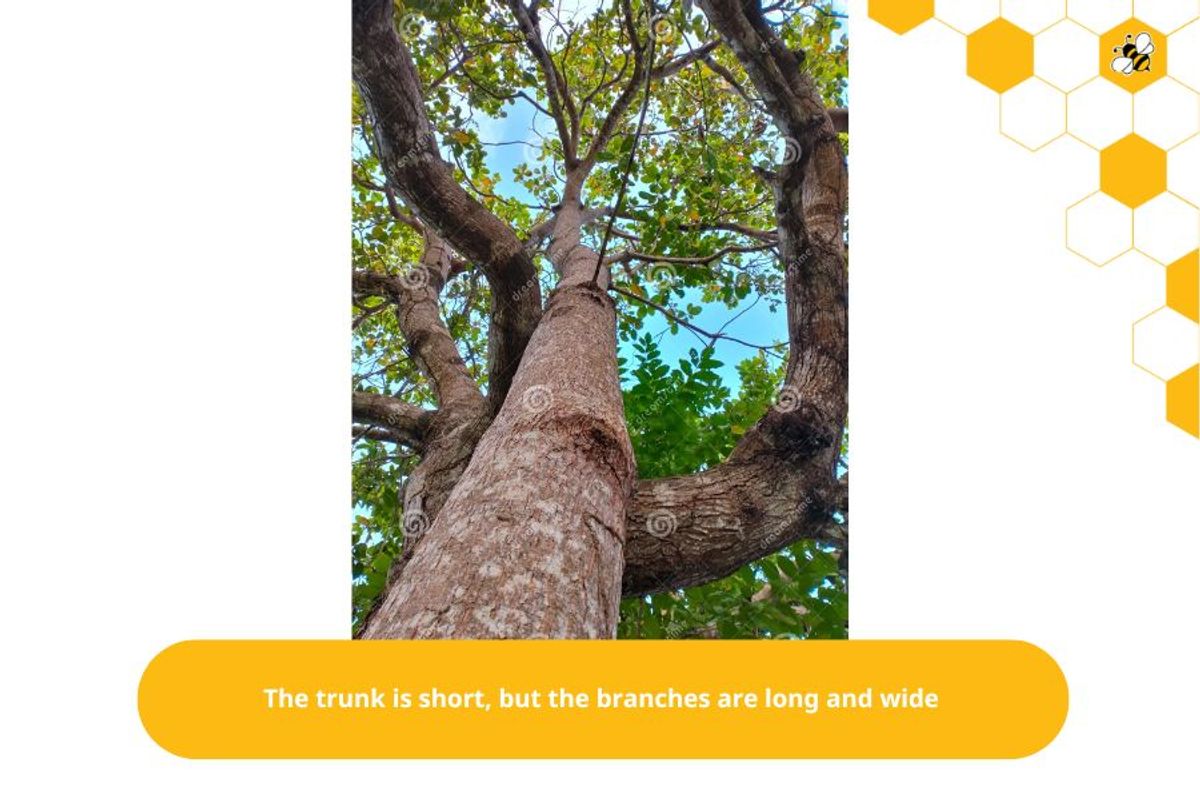
Roots
Cashew trees have a strong root system.
The root system consists of both taproots and lateral roots.
The taproot can penetrate very deep to absorb water, and the lateral roots spread out to search for nutrients.
The strong root system allows the cashew tree to flower and fruit throughout the 5-6 month dry season.
The root system consists of both taproots and lateral roots.
The taproot can penetrate very deep to absorb water, and the lateral roots spread out to search for nutrients.
The strong root system allows the cashew tree to flower and fruit throughout the 5-6 month dry season.
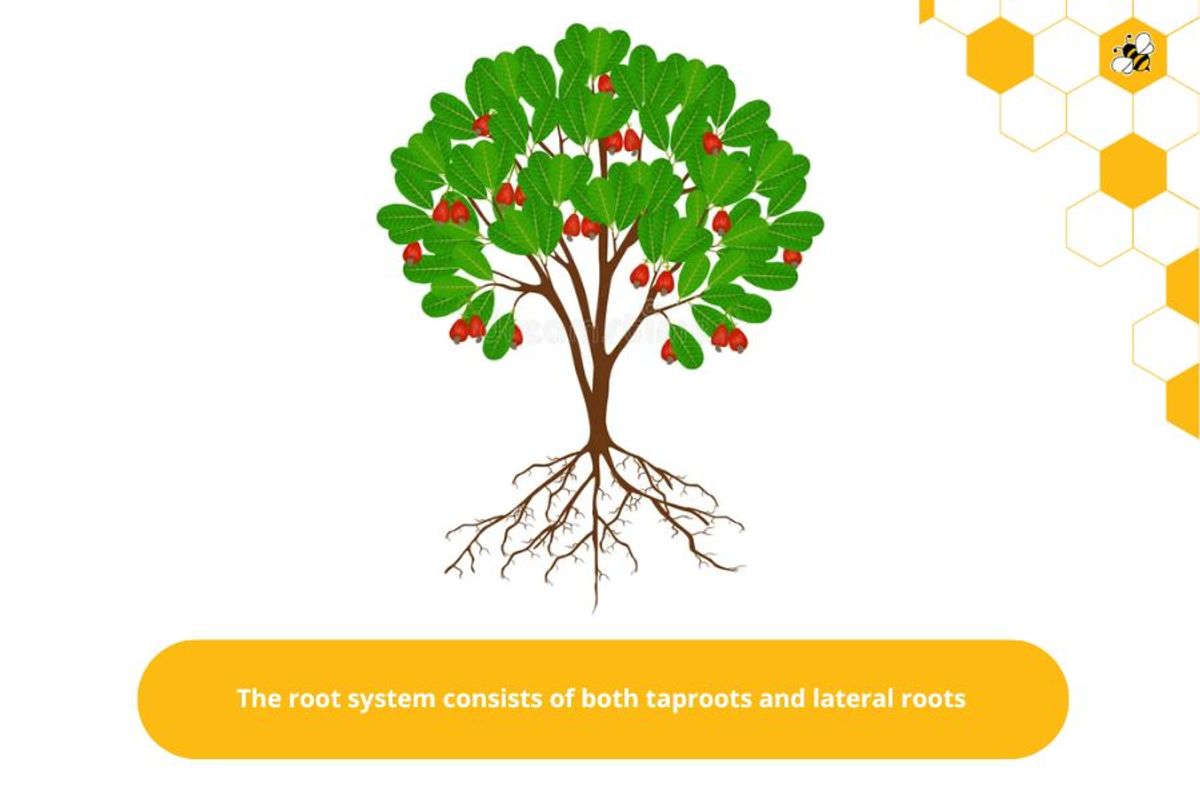
Leaves
The leaves are concentrated at the tip of the branches.
The leaves are simple, round, and oval, growing alternately, with short petioles.
When young, the leaves are light green or red, when old, the leaves are dark green and smooth.
The leaves are simple, round, and oval, growing alternately, with short petioles.
When young, the leaves are light green or red, when old, the leaves are dark green and smooth.
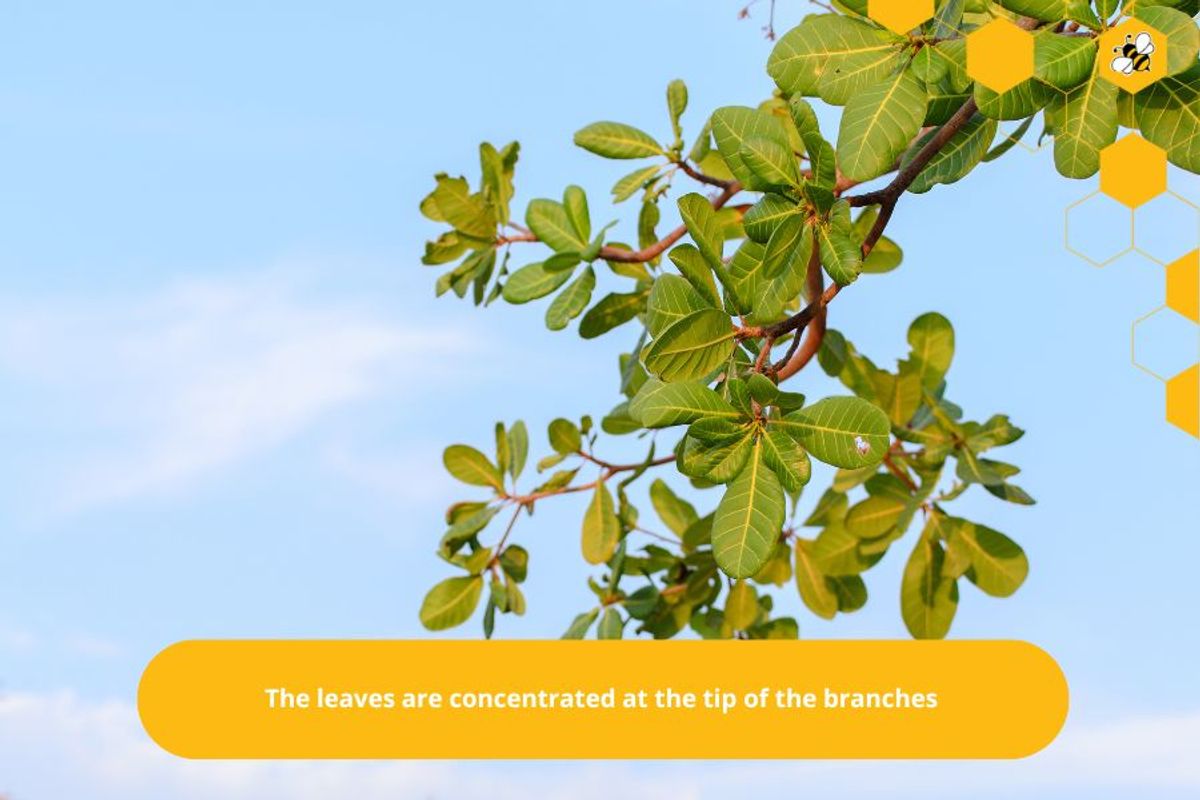
Flowers
Cashew trees flower from the end of the rainy season to the beginning of the dry season (November to February of the following year).
Cashew flowers are small, fragrant, and white.
Flowers appear at the ends of branches and in panicle-shaped clusters.
Each cluster has from 200 to 1600 flowers.
Cashew flowers are small, fragrant, and white.
Flowers appear at the ends of branches and in panicle-shaped clusters.
Each cluster has from 200 to 1600 flowers.
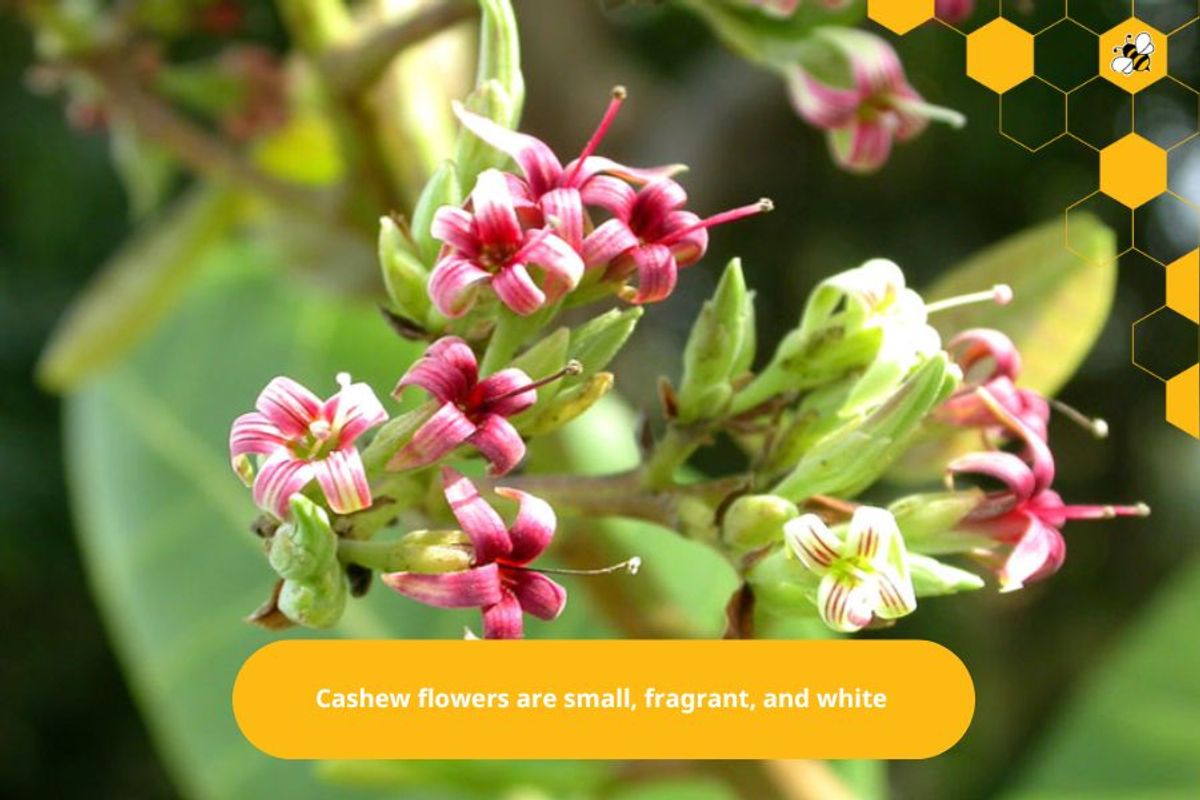
Fruit and Seeds
Cashew fruits are pinkish-yellow in color.
The seeds of the cashew fruit are located on the outside of the fruit.
The seeds of the cashew fruit are located on the outside of the fruit.
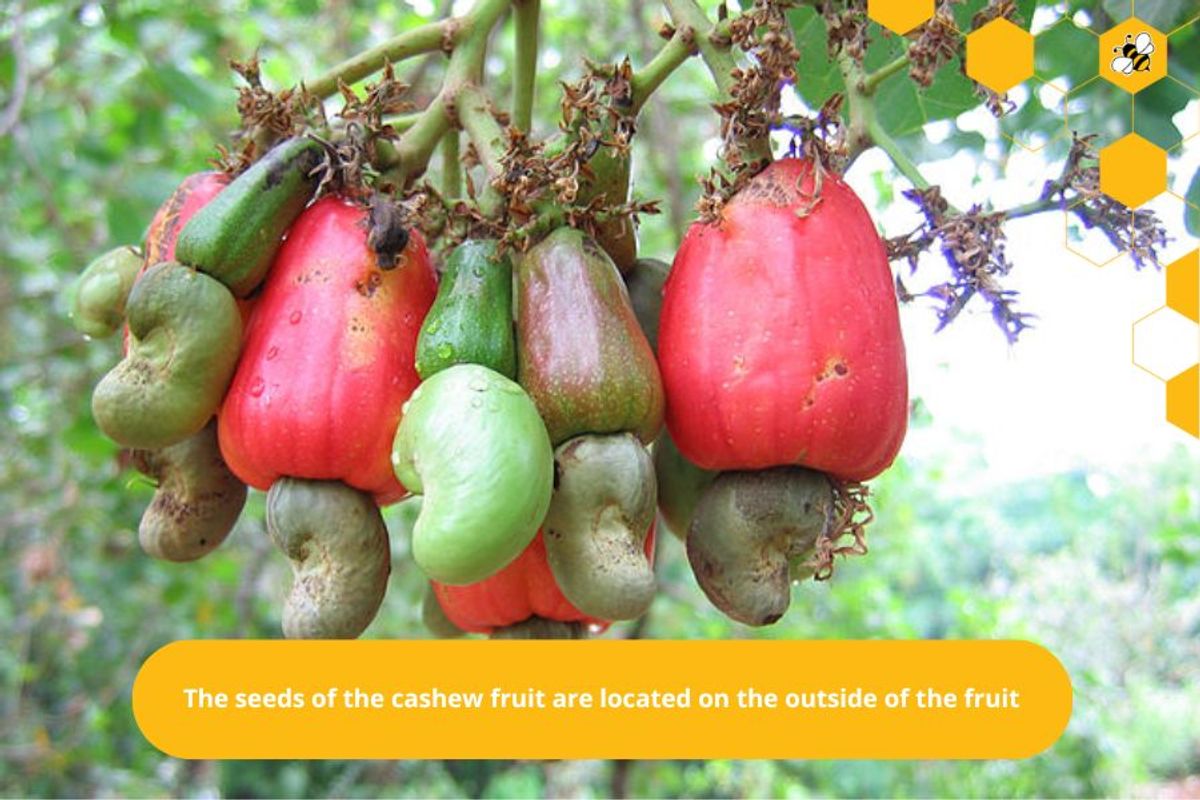
Origin of the Cashew Tree
The cashew tree (also known as the cashew nut) is native to northeastern Brazil and belongs to the Anacardiaceae family. The scientific name of the cashew tree is Anacardium occidentale. Cashews were introduced to Asia and Africa between 1560 and 1565 after European colonial empires discovered the Americas. Today, this tree has become an industrial crop grown throughout tropical climates around the world to obtain cashew nuts for processing into food.
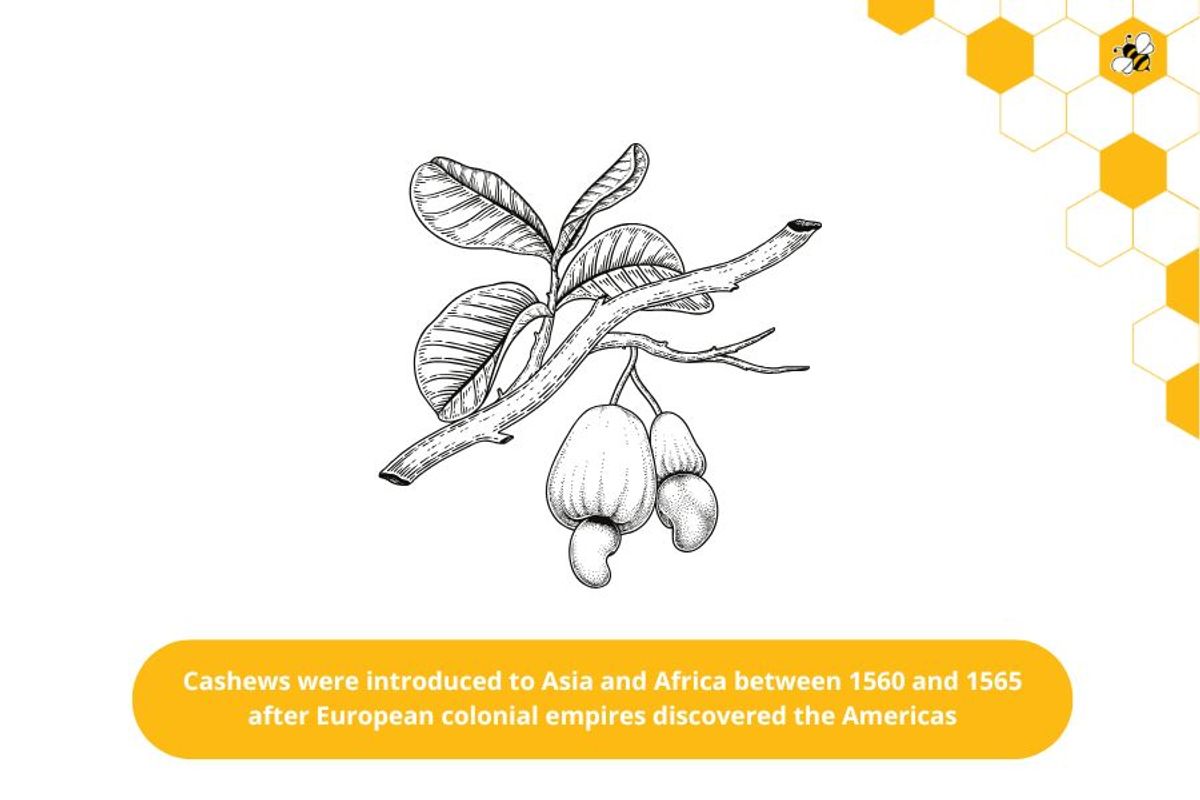
In Vietnam, cashew trees were introduced in the 1980s and were later selected as a multi-purpose industrial crop. Cashew trees have covered barren hills and are widely planted in the provinces of the Southeast, Central Highlands, and South Central Coast such as Binh Phuoc, Dong Nai, Ba Ria - Vung Tau, Binh Thuan, Lam Dong, Dak Lak, Dak Nong, and many other places. Since 2006, Vietnam has become the world's leading exporter of cashew nuts and the third country with the largest cashew growing area in the world, after India and Ivory Coast.
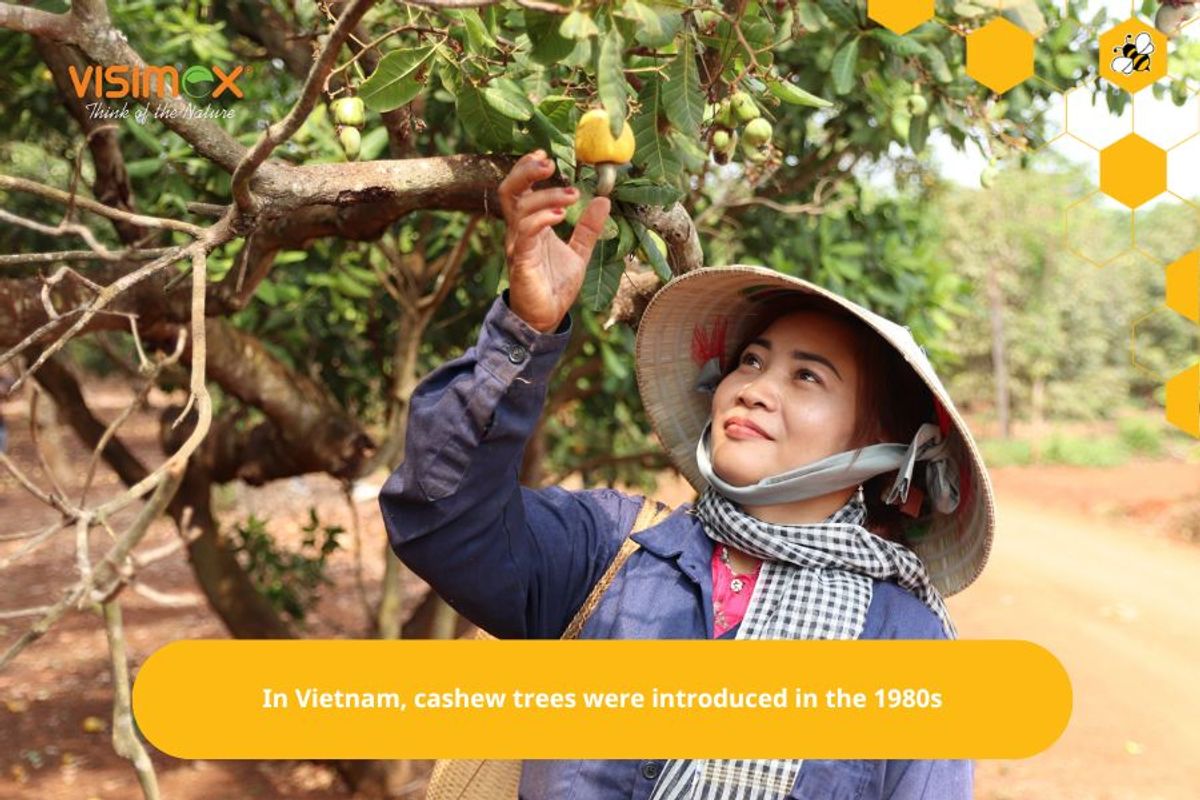
In terms of nutritional value, 100g of cashew nuts contain about 553 kcal of energy, 30.19g of carbohydrates, 43.85g of fat, and 18.22g of protein. Cashew nuts also provide many vitamins and minerals such as vitamin E, potassium, iron, magnesium, manganese, and copper.
Distribution of cashew trees in the world
Cashew (Anacardium occidentale) is a tropical tree native to South America. Cashew trees were introduced to Asia and Africa by European explorers in the 16th century. Currently, global cashew production reached about 4.27 million tons in 20111. Here is some information about the distribution of cashew trees in the world:
Vietnam: Vietnam is the world's leading cashew-producing country. This country has an ideal climate and soil conditions for growing cashew trees, and cashew nut production is high. Vietnam contributes a large part to the world's total cashew production.
Vietnam: Vietnam is the world's leading cashew-producing country. This country has an ideal climate and soil conditions for growing cashew trees, and cashew nut production is high. Vietnam contributes a large part to the world's total cashew production.
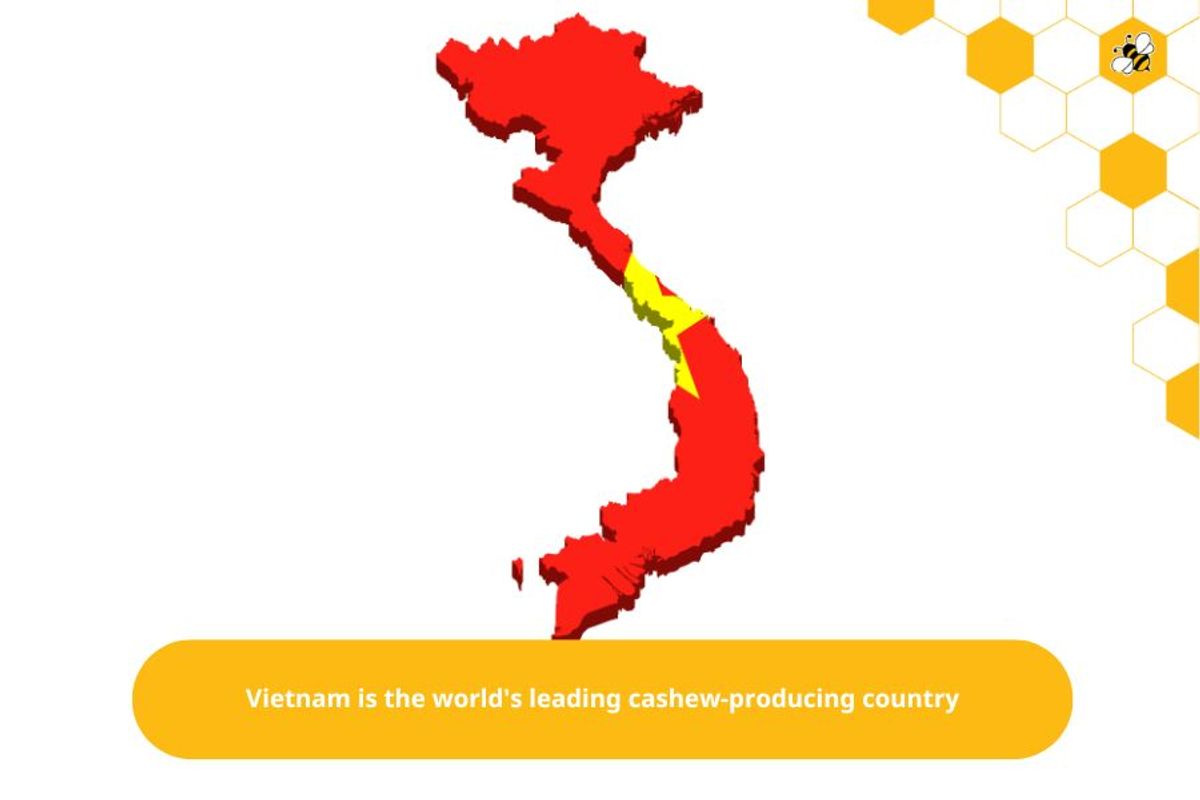
India: India is a leading cashew processing and exporting country. Although it does not produce as many cashews as Vietnam, India has a developed cashew processing industry and exports to the international market.
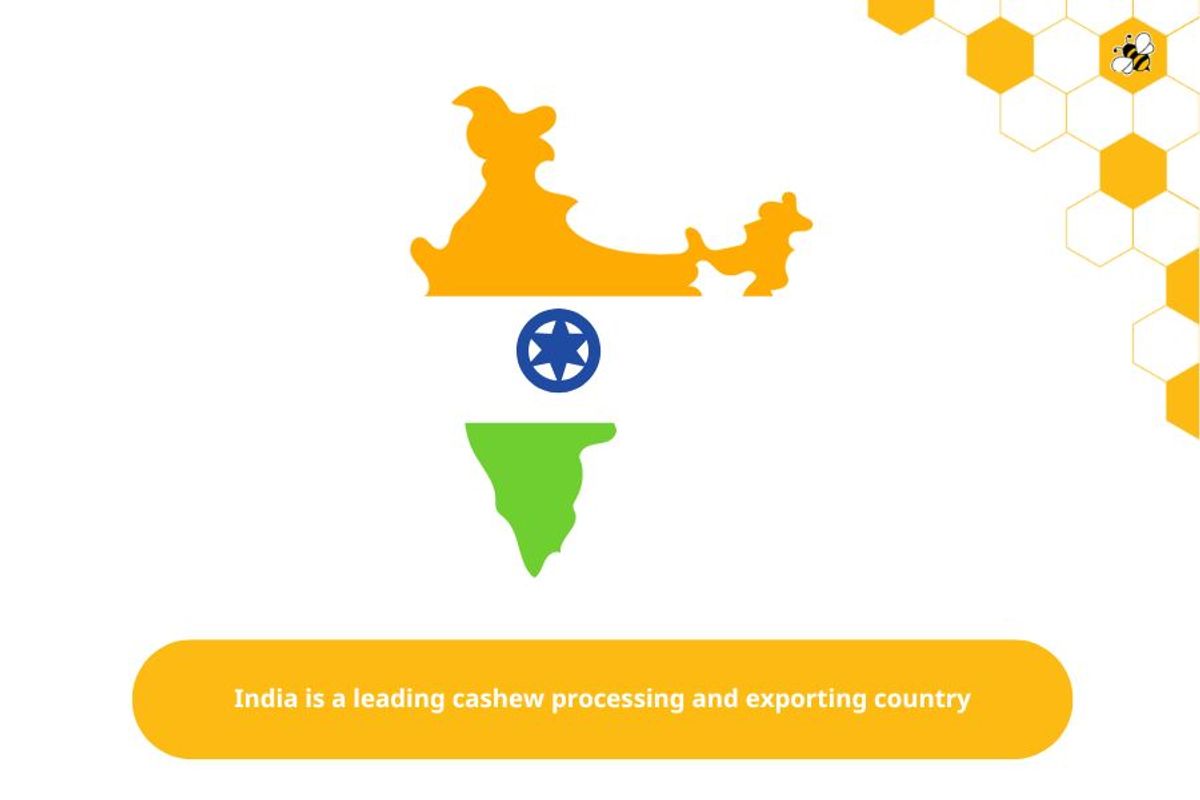
Côte d’Ivoire (Ivory Coast): Côte d’Ivoire is one of the important cashew producing countries in Africa. Cashew production here is stable and contributes to the global cashew supply.
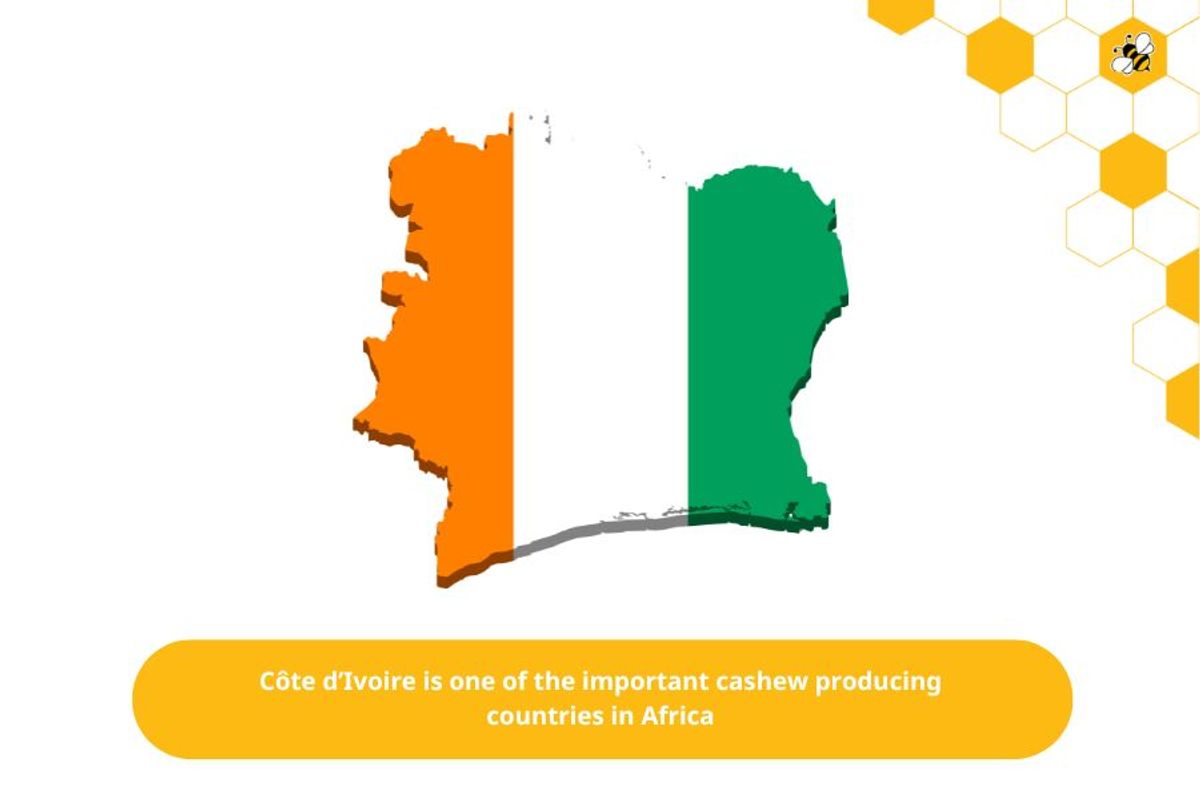
Guinea-Bissau: Guinea-Bissau is also an African country that produces cashew nuts. Although the production is not large, cashew trees still contribute to the local economy.
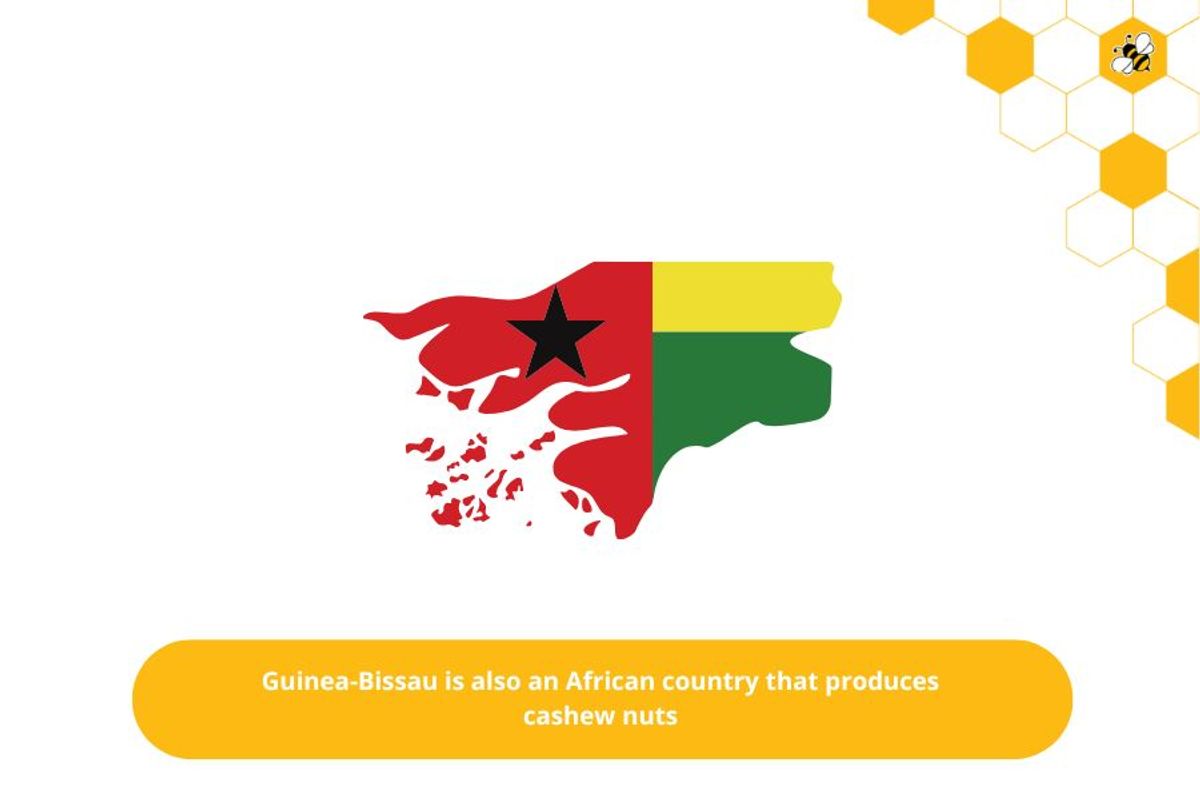
Tanzania: Tanzania is also an African country that produces cashew nuts. Cashew nut production here is stable and contributes to the global cashew nut supply.
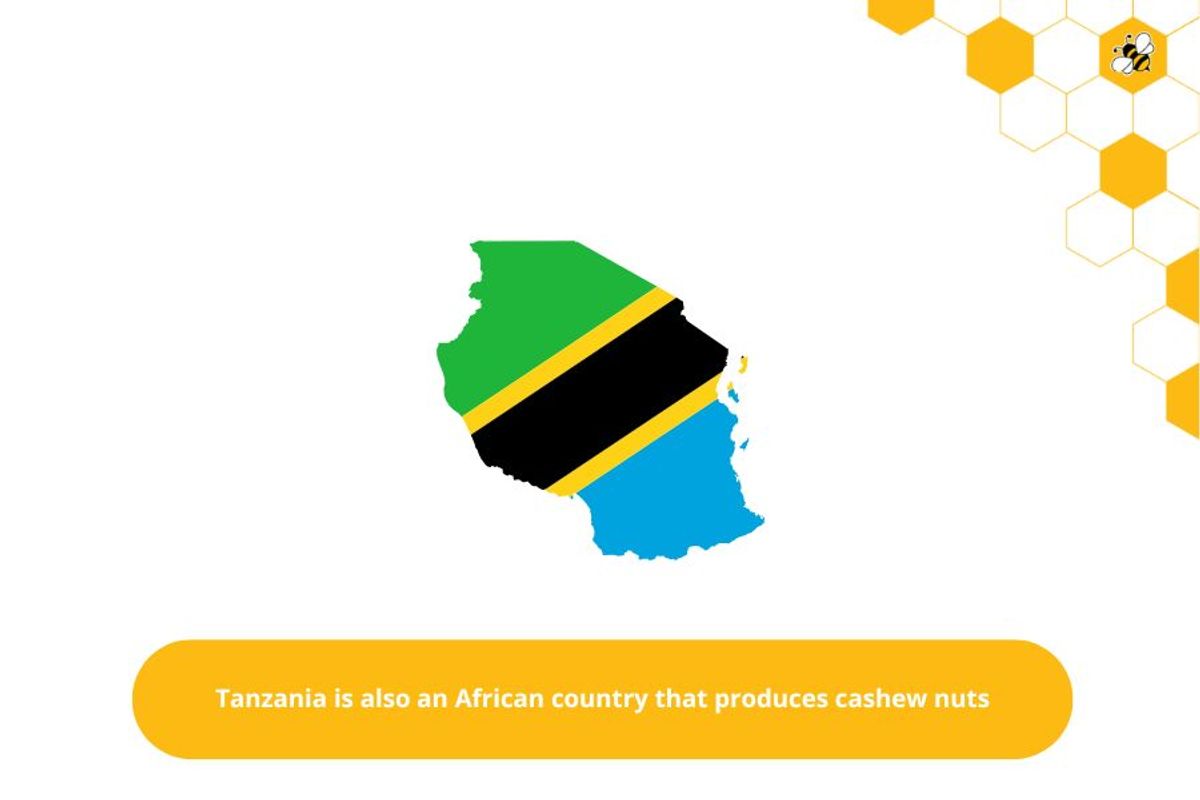
Brazil: Brazil is one of the cashew-producing countries in South America. Although not among the top cashew-producing countries in the world, Brazil still contributes to the global cashew supply.
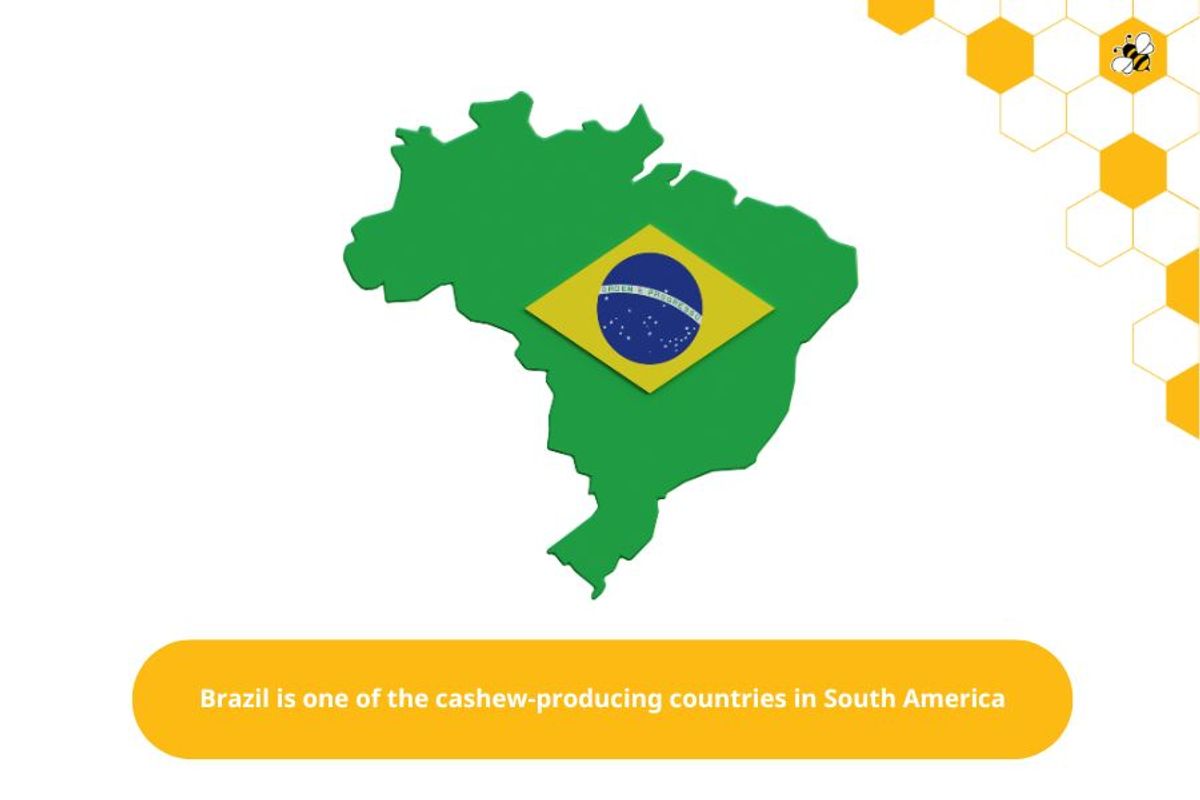
In addition, cashew trees are also grown in many other countries in Africa and Asia. However, the above countries are places with significant cashew nut production and make important contributions to the world cashew market.
Economic value of cashew trees
Cashew trees (also known as cashew nuts) are one of the important agricultural export crops of Vietnam. Cashew varieties, also known as cashew nuts, have contributed to improving the economy of fruit growers. Let's learn about the economic value of cashew trees:
Cashew trees have significant economic value and make important contributions to the economies of many countries. Here is some information about the economic value of cashew trees:
Cashew trees have significant economic value and make important contributions to the economies of many countries. Here is some information about the economic value of cashew trees:
Cashew production
Cashew trees are grown mainly for cashew nut production in 46 countries across Africa, Asia, Latin America, and the Caribbean. Cashew trees usually bear fruit after three years and reach productivity after seven or eight years. The economic life of a cashew tree is 20-25 years, after which production begins to decline.
A study has shown that for every $1 earned from cashew nut sales, an additional $1.43 in household income is generated in the local economy.
Contribution to farmers and rural economies: Cashew nut production has the potential to create significant value for farmers in emerging countries. In addition to exports to international markets, cashew is an important source of livelihood for smallholder farmers, especially those who grow and process cashew nuts.
Adding value to cashew by-products: In addition to cashew nuts, cashew trees produce several economically valuable by-products, including:
Cashew nutshell oil: Used in the chemical and pharmaceutical industries.
Cashew nut residue: Used as animal feed and organic fertilizer.
Cashew apples: Can be processed into juice, jam, or used in food.
Cashew shells: Can be produced into plywood or construction materials.
Thus, cashew trees are not only a valuable source of cashew nuts but also contribute positively to the economy and lives of many people.
A study has shown that for every $1 earned from cashew nut sales, an additional $1.43 in household income is generated in the local economy.
Contribution to farmers and rural economies: Cashew nut production has the potential to create significant value for farmers in emerging countries. In addition to exports to international markets, cashew is an important source of livelihood for smallholder farmers, especially those who grow and process cashew nuts.
Adding value to cashew by-products: In addition to cashew nuts, cashew trees produce several economically valuable by-products, including:
Cashew nutshell oil: Used in the chemical and pharmaceutical industries.
Cashew nut residue: Used as animal feed and organic fertilizer.
Cashew apples: Can be processed into juice, jam, or used in food.
Cashew shells: Can be produced into plywood or construction materials.
Thus, cashew trees are not only a valuable source of cashew nuts but also contribute positively to the economy and lives of many people.
Export potential
Vietnam is currently the world's leading country in cashew nut export output.
Cashew trees are mainly grown in the Southern provinces, the Central Highlands, the Southeast, and a few in the West.
Binh Phuoc, Binh Dinh, Dong Nai, Dak Lak, and Binh Thuan provinces have the largest cashew-growing areas in the country.
Growing cashew trees not only brings high profits to fruit growers but also helps stabilize the economy and get rich.
Cashew trees are mainly grown in the Southern provinces, the Central Highlands, the Southeast, and a few in the West.
Binh Phuoc, Binh Dinh, Dong Nai, Dak Lak, and Binh Thuan provinces have the largest cashew-growing areas in the country.
Growing cashew trees not only brings high profits to fruit growers but also helps stabilize the economy and get rich.

Cashews in Vietnam
Vietnam is renowned for its production of high-quality cashew nuts, with an estimated 50% of the global supply coming from the Southeast Asian country. Vietnam’s climate and soil provide ideal conditions for growing cashews, resulting in high-quality cashews that are sought after by consumers and businesses around the world.
Cashews in Vietnam are typically grown in the South, mainly in the provinces of Binh Phuoc, Dong Nai, and Ba Ria-Vung Tau. Cashews are typically grown on small and family farms, with an average area of 0.5 ha to 3 ha. Typically, about 92% of cashew trees bear fruit from the third year after planting. Fruit yield per tree in Vietnam varies depending on the age of the tree. On average, yield per tree increases from about 2 kg at 3-5 years old to 4 kg at 6-10 years old and 5-10 kg when the tree is 11-15 years old. The tree then bears more than 10 kg of fruit as it gets older.
Cashews in Vietnam are typically grown in the South, mainly in the provinces of Binh Phuoc, Dong Nai, and Ba Ria-Vung Tau. Cashews are typically grown on small and family farms, with an average area of 0.5 ha to 3 ha. Typically, about 92% of cashew trees bear fruit from the third year after planting. Fruit yield per tree in Vietnam varies depending on the age of the tree. On average, yield per tree increases from about 2 kg at 3-5 years old to 4 kg at 6-10 years old and 5-10 kg when the tree is 11-15 years old. The tree then bears more than 10 kg of fruit as it gets older.
There are many varieties of cashew nuts grown in Vietnam today, but most of them fall into five main categories. These typically produce clusters of five to ten nuts. The main colors of cashew nuts are yellow and red.

However, the proportion of cashew nuts, the size of fresh cashew nuts, and the yield are quite different. About 60% of the cashew growing area in Vietnam, about 150,000 hectares, yields about 1.5 tons per hectare. On average, the yield of fresh cashew nuts per tree is about 15 kg. The yield of fresh cashew nuts per hectare is about 1.5 tons.